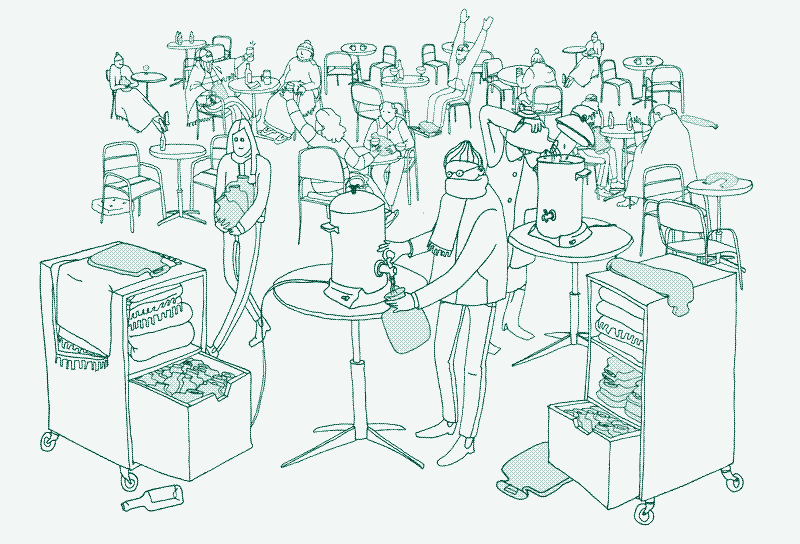
A hot water bottle is a sealable container filled with hot water, often enclosed in a textile cover, which is directly placed against a part of the body for thermal comfort. The hot water bottle is still a common household item in some places – such as the UK and Japan – but it is largely forgotten or disregarded in most of the industrialised world. If people know of it, they usually associate it with pain relief rather than thermal comfort, or they consider its use an outdated practice for the poor and the elderly.
Nevertheless, when I sent two dozen hot water bottles to friends and family as a Christmas present, the reactions were almost unanimously enthusiastic. People show themselves very much surprised that such a humble object can provide so much comfort. Because I don’t have the time nor the budget to send hot water bottles to everyone, I have written this article. It’s largely based on my personal experience – I have been using hot water bottles for many years and they are the only heat source in my apartment.
The history of the hot water bottle
Croat inventor Eduard Penkala patented the rubber hot water bottle – which he dubbed the “Termofor” – in 1903. However, it did not come out of nowhere. In fact, the history of the hot water bottle goes back thousands of years, albeit in different guises.
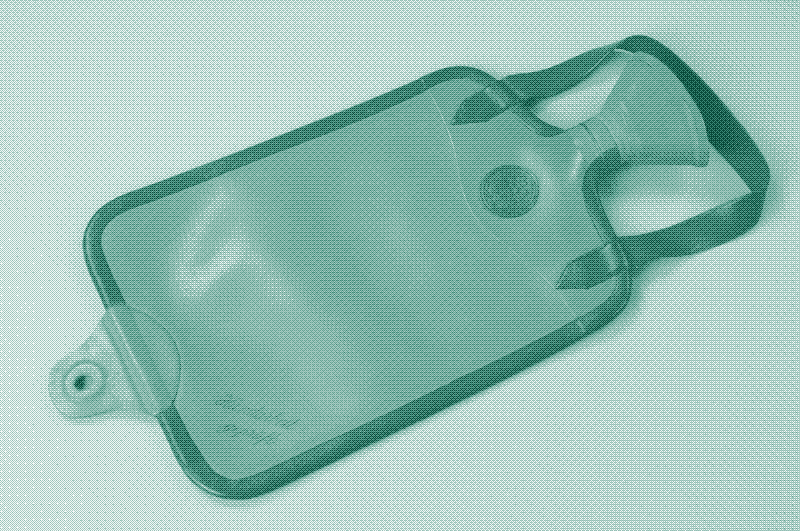
The first “hot water bottles” – quite literally – were other people and animals. Since time immemorial, people have warmed themselves by huddling together. For example, it was common for the whole family to sleep together in the same bed – and this included potential visitors. 1 People also took advantage of the heat from animals – “hot water bottles” with a standard fur cover.
They snuggled up against cows and pigs, which were either sharing the living space or lived in the stables below it. In the eighteenth century, wealthy women kept specially bred “hand dogs” – toy poodles – around to keep their lap and hands warm. 2 Personal heating devices also took the form of objects – stones, bricks, potatoes – that were heated in or near the fire, wrapped in cloth or paper, and kept in people’s laps, in pockets, or in the bed.
As early as the 1500s, people started to use all kinds of portable containers filled with hot coals from the fire. These were used as foot warmers, hand warmers, and bed warmers. 3 Most were made of metal, either brass or copper, and placed inside wooden or ceramic enclosures to prevent skin burns. Over time, hot coals were replaced by hot water, which is a cleaner and safer heat storage medium.
Initially, these first “real” hot water bottles were made from hard materials such as glass, metal, or stoneware. It was only with the invention of vulcanised rubber in the nineteenth century that more comfortable lightweight and flexible hot water bottles became an option. Spanish friends told me that hot water bottles used to be made from animal skins, but I could not verify this. It may well be true, because all over the world there’s a long tradition of using “water skins” for storing liquids.
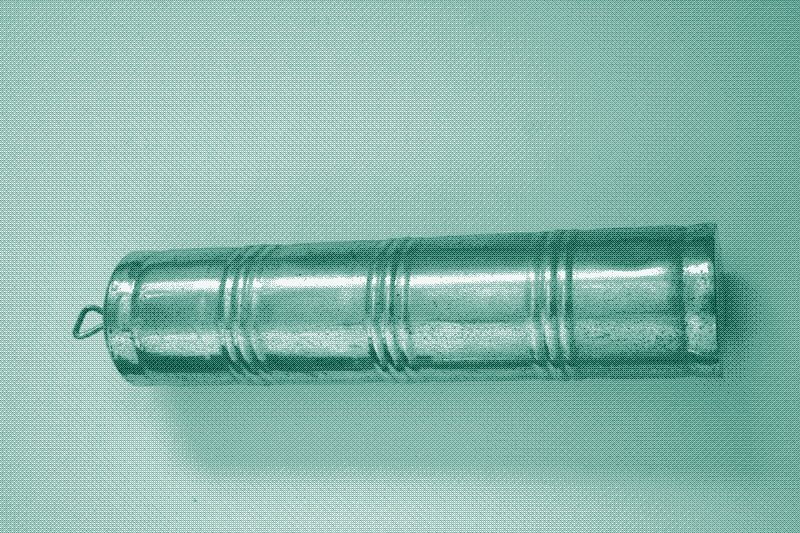
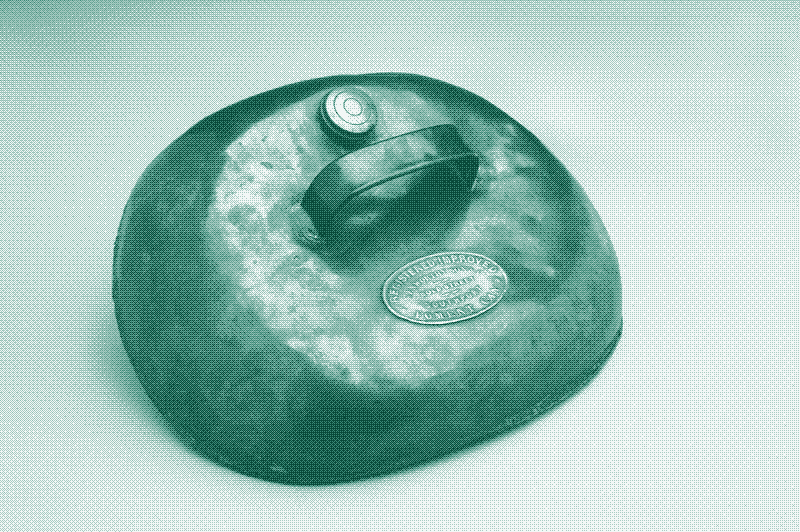
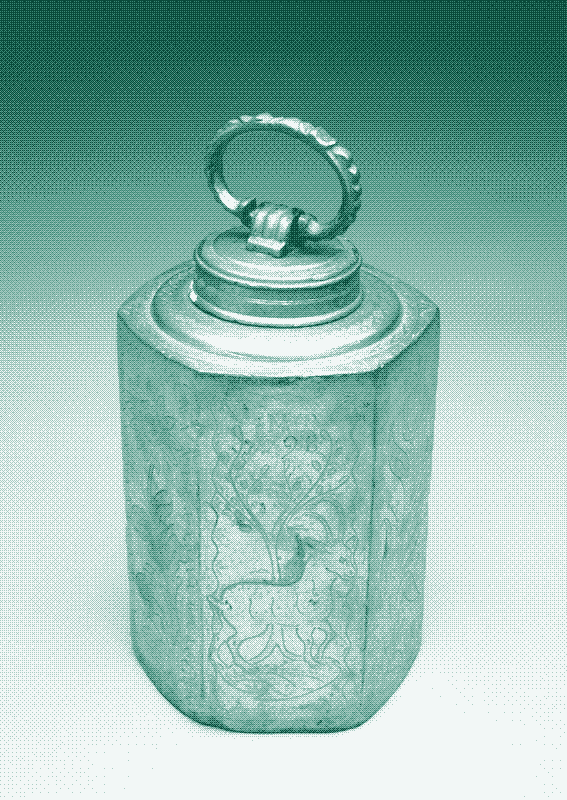
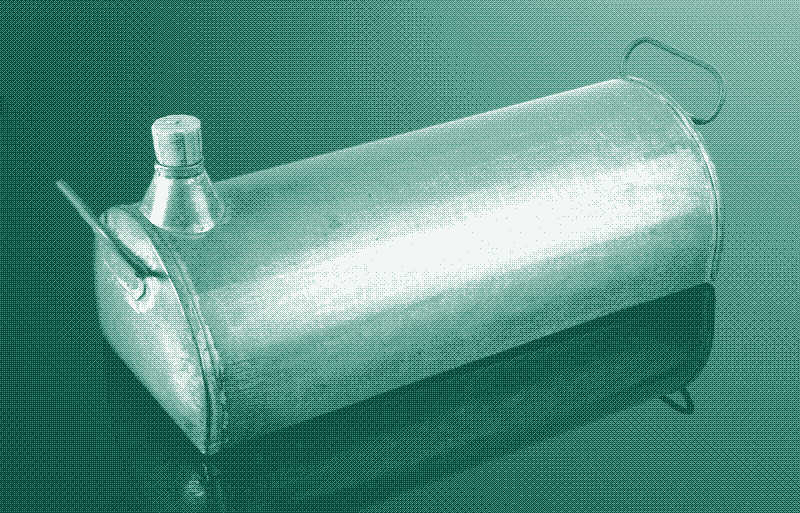
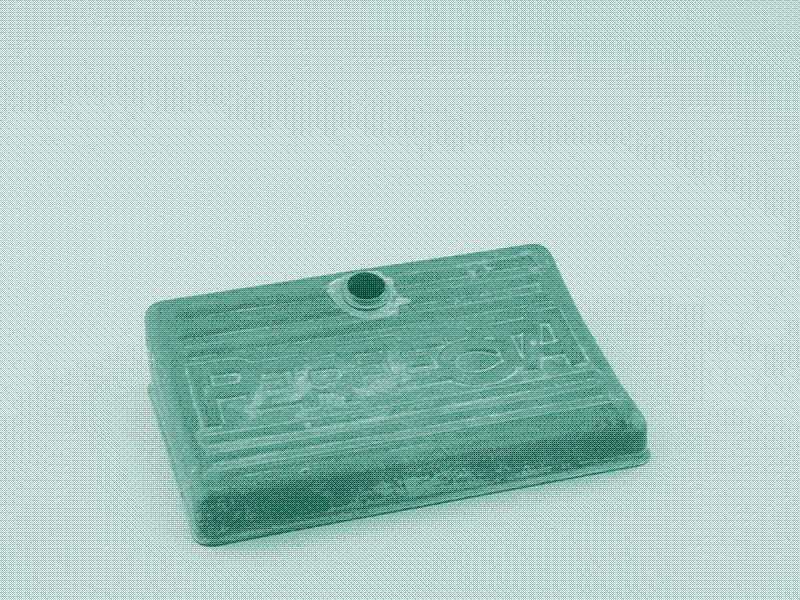
Hot water bottles today
The classical hot water bottle for sale today is either made from rubber or PVC plastic. The latter material has few advantages. It’s often a bit cheaper and can be made transparant, but unlike rubber it contains toxic chemicals (which make the plastic flexible). A third option – a bit harder to find – are plastic hot water bottles without chemical softeners, which are rigid instead of flexible.
The distinctly shaped Japanese hot water bottle – the “yutampo” – is usually of that type. Its use dates back to the fifteenth century when it was made from metal or stoneware. Of course any sealable container can function as a hot water bottle. I have successfully used metal drinking bottles and even plastic PET-bottles – more about those later.
In spite of its dull image, the hot water bottle has seen some interesting innovations lately.
The typical hot water bottle has a rectangular shape and holds up to two litres of water. However, in spite of its dull image, the hot water bottle has seen some interesting innovations lately. A first novelty are much smaller rectangular bottles, which hold between 0.2 and 0.8 litres of water. Judging by their covers, these are mostly aimed at children, but they can be just as useful for adults who can carry them in pockets or put them inside clothing.
There are now also larger hot water bottles available, which hold up to three litres of water or more. Finally, the most successful novelty has the form of a hot dog: it’s a hot water bottle 80 centimetres long. It can be tied around the waist but is just as practical as a companion on the couch or in the bed. It can easily be shared by two people and its shape makes it luxuriously comfortable. It holds up to two litres of water.
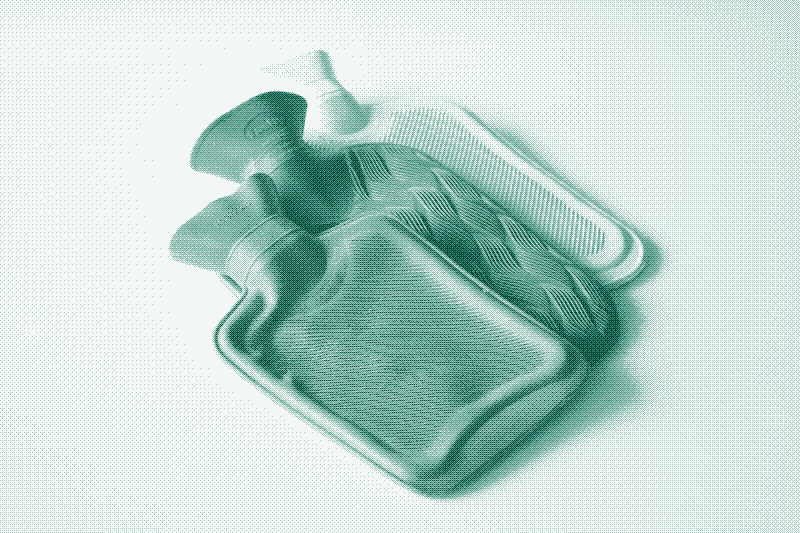
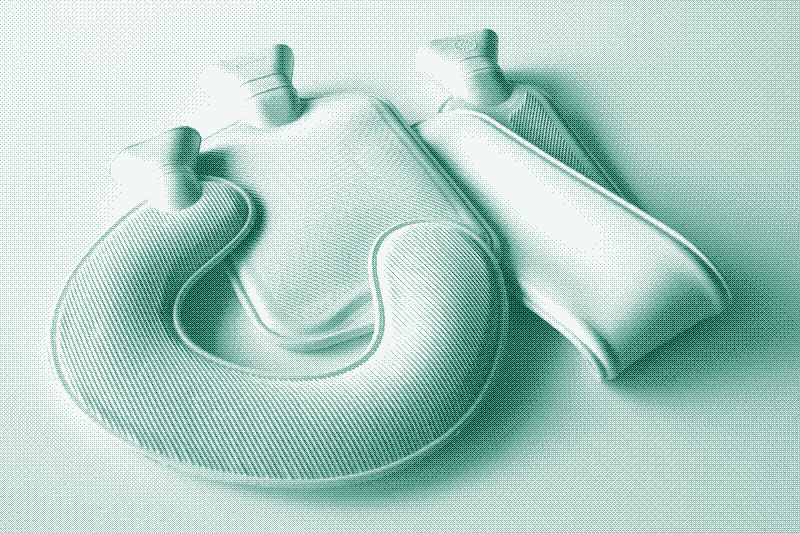
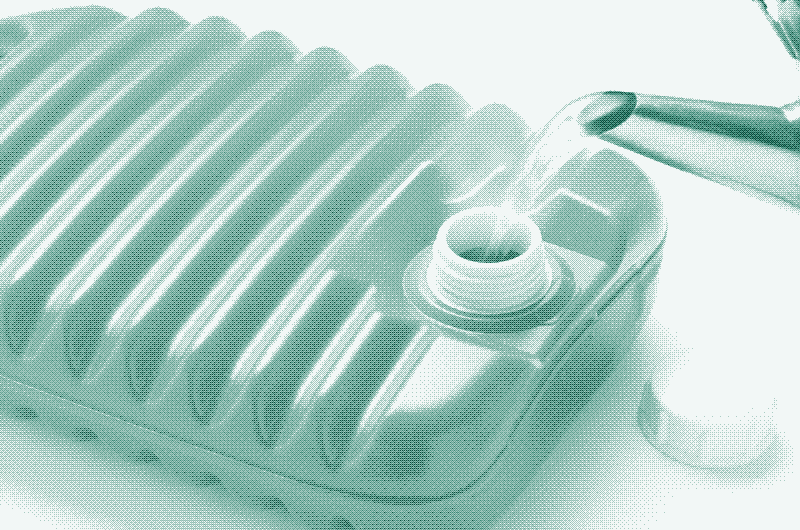
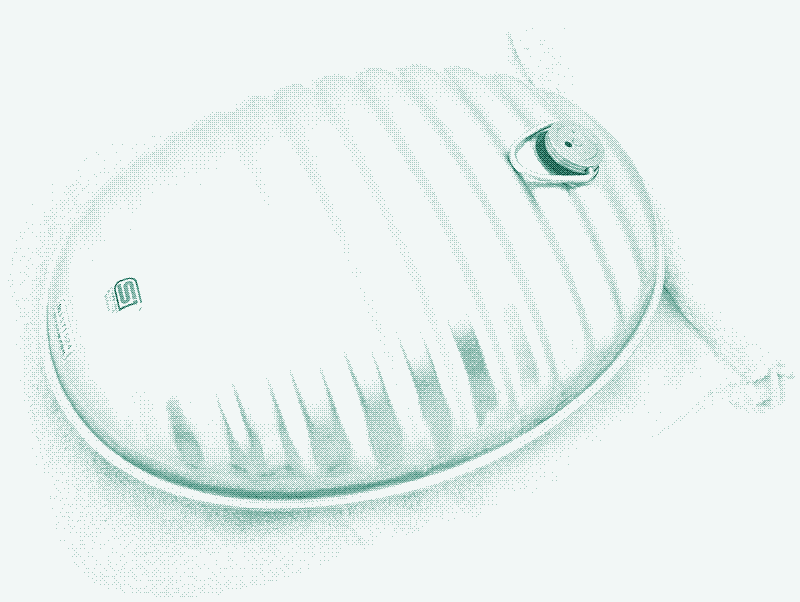
How to use hot water bottles?
People who know hot water bottles usually think of them as bed companions. However, they can keep you warm wherever you are, throughout the day. This includes the sofa, of course, but you can also surround yourself with one or more hot water bottles when seated at a desk or a table.
I use one, two, or exceptionally three hot water bottles simultaneously, depending on the indoor temperature. They usually end up in my lap, behind my lower back, and/or under my feet. Although only some body parts are directly heated, the warmth from the bottle(s) is distributed throughout the body by skin blood flow.
Hot water bottles can be combined with a blanket, which further increases thermal comfort. If I put a blanket over the lower part of my body when seated at my desk, it traps the heat from the bottles and keeps them warm for longer.
Even better is a blanket with a hole in the middle to stick your head through – a basic poncho – or a blanket with sleeves. If it’s large enough, it creates a tent-like structure that puts your whole body in the warm microclimate created by the water bottles. Draping long clothes over a personal heat source was a common comfort strategy in earlier times.
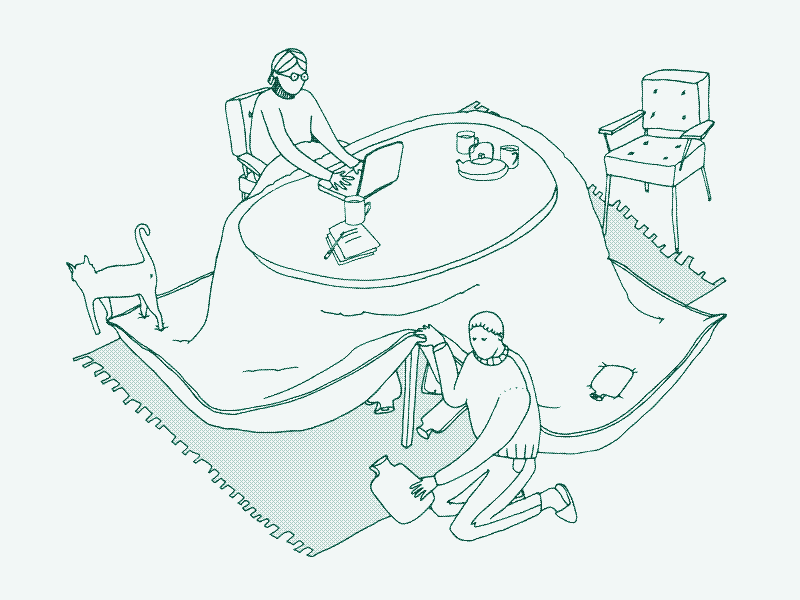
You can go one more step further and put a large blanket over the desk or table and then put your legs underneath it. Such heating arrangements have been used in different parts of the world, usually with hot coals as the heat storage medium. Examples are the Japanese “kotatsu”, the Middle-Eastern “korsi”, and the Spanish “brasero de picon”.
The first two are rather low to the ground – people sit on the floor – while the latter fits the common seat height in the Western world. It’s easy to build such a heating arrangement – and a few hot water bottles are the ultimate heat source for it.
Hot water bottles outdoors & on the move
The arrangements described above only work for people who stay in one place. The need for an external heat source decreases when we move around and are physically active, because our body produces more heat.
Nevertheless, hot water bottles can also keep you warm when you are standing up doing things or when you are moving through a space or a building. They can be worn underneath clothing or even put in specially designed pockets or backpacks. A small backpack holding a hot water bottle – positioned between the shoulder blades – also works great while sitting on a chair.

Hot water bottles work both indoors and outdoors – provided that the body is protected from wind and rain – or indoors with the all the windows open. Modern central heating systems provide thermal comfort mainly by heating the air in a space, an approach that obviously won’t work well outdoors or in a well-ventilated indoor space. In contrast, hot water bottles transfer heat directly to people through physical contact (a heat transfer method called “conduction”). They heat people, not spaces.
This makes hot water bottles a safe and sustainable alternative for terrace heaters in bars and restaurants. The investment is minimal: a collection of hot water bottles and a kettle – the water can be re-used over and over again. Alternatively, everyone could bring their own hot water bottle and fill it up on the terrace.
Hot water bottles are a safe and sustainable alternative for terrace heaters in bars and restaurants.
One could take this idea even further and envision a public infrastructure for refilling hot water bottles, not just on bar terraces but in multiple locations such as schools, offices, and public buildings. 4 People could gather around the hot water dispenser just like they gather around the water cooler.
Historically, hot water bottles – and their predecessors using hot coals – were also taken out of the house. Their use was common in coaches and trains, as well as in churches, which were unheated. Smaller hot water containers with carrying strings and fabric covers were put into fur muffs or pockets. Nowadays, you could also store hot water in a vacuum flask and then pour it into a hot water bottle hours later.
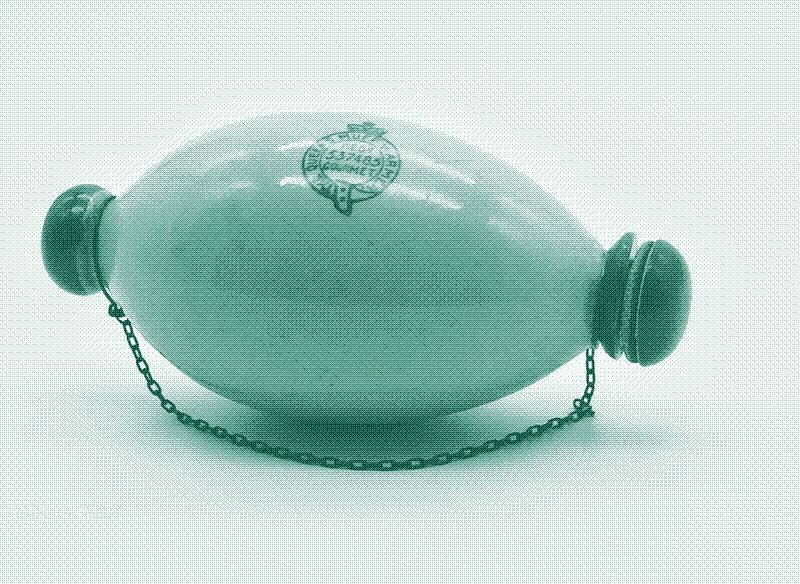

900 hot water bottles per day: energy savings
Unsurprisingly, there’s little – or actually no – academic research into the energy savings potential of hot water bottles. Instead, in recent years scientists have investigated more sophisticated personal heating devices such as electrically heated desks and seats, radiant heat bulbs, or battery-powered heat pillows. 567
These alternatives look needlessly complex in comparison to the hot water bottle. Water can be heated in many ways both high-tech and low-tech, and containers can be made from locally available materials.
Nevertheless, these studies show that personal heating sources with similar effects as hot water bottles could save a great deal of energy while maintaining and often even improving thermal comfort. For example, one study revealed that lowering the air temperature in an office from 20.5°C to 18.8°C (69°F to 66°F) and giving employees a heated chair to compensate for the discomfort leads to 35% less energy use and consistently higher scores for thermal comfort.
There are few interventions in the building envelope that can achieve such large energy savings for such a small investment, and yet the decrease in air temperature was far from radical in this experiment. If personal heating devices would be combined with a change in clothing insulation and/or blankets the energy savings could become much larger still.
Another way to investigate the energy savings potential of the hot water bottle is to calculate how much energy it takes to prepare one and compare that to the energy use of a central heating system. Because rubber or PVC bottles can only be filled up to two-thirds for safe and comfortable use, I assume a somewhat larger model – 3 L – which can hold two litres of water in practice.
This makes the calculation also valid for containers that can be filled completely, such as the Japanese yutampo. It takes 4,200 joule to raise the temperature of 1 litre of water by 1°C, meaning that heating two litres of water from 10°C to 60°C (50°F to 140°F) requires 420 kilojoule or 116.7 watt-hours.
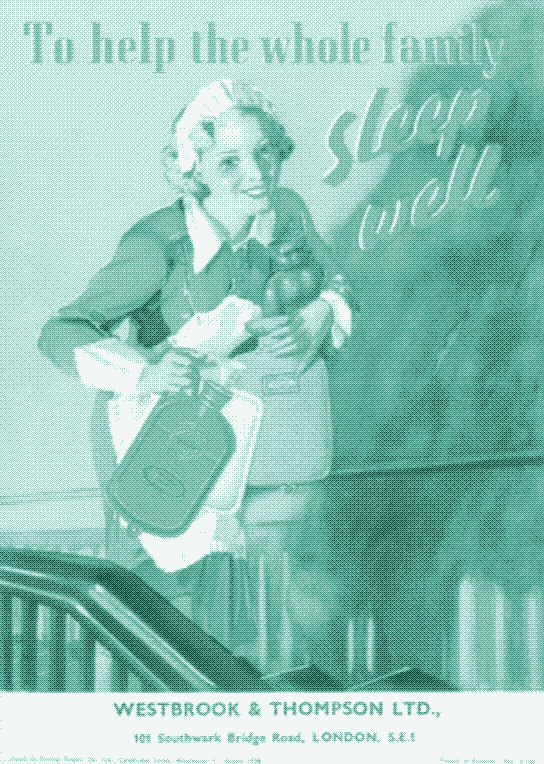
In comparison, the average household energy use for gas heating in Belgium – which has a moderate climate – is 20,000 kWh per year. Assuming that the average Belgian heating system is used for six months per year, daily energy use corresponds to 109.6 kWh per day. This energy could heat roughly 900 water bottles per day – enough to keep the whole neighbourhood comfortable.
Imagine that four household members each use two hot water bottles simultaneously and reheat them every two hours throughout their waking hours (16 hours). Total energy use is then below 4 kilowatt-hours, almost 30 times less than the heating energy consumed by the average Belgian household.
This is not to suggest that hot water bottles need to replace a central heating system. The rather short and mild winters here in Barcelona allow me to use hot water bottles as the only heating system because it rarely gets colder than 12°C (54°F) in my unheated apartment.
In less hospitable climates, hot water bottles can be combined with a central heating system. The hot water bottles create islands of thermal comfort for low metabolism activities while the rest of the indoor space is comfortable to move through or be physically active in.
Safety
Hot water is a safer heat storage medium than hot coals, but it is not without its risks and hot water bottles need to be used carefully. They carry the instruction not to use boiling water, which is very sound advice, but hot water doesn’t need to boil to be dangerous. Water above a temperature of 60°C (140°F) can scald you and lead to very serious injuries.
Therefore, it’s recommended to use only hot tap water, or any other hot water source below 60°C. This temperature is sufficiently high to make you comfortable and the only advantage of using hotter water is that you need to reheat it less often.
Too hot water can hurt you in several ways. First, there’s always a chance you spill water on your hands while filling the bottle. Second, a rubber or plastic hot water bottle can start leaking, either through the cap or through the seams.
Third, and this is the worst-case scenario, a hot water bottle can burst and release two liters of hot water on your body. Such accidents are rare, because nowadays hot water bottles are made according to quality standards. However, they do occur, usually because the bottle has worn out.
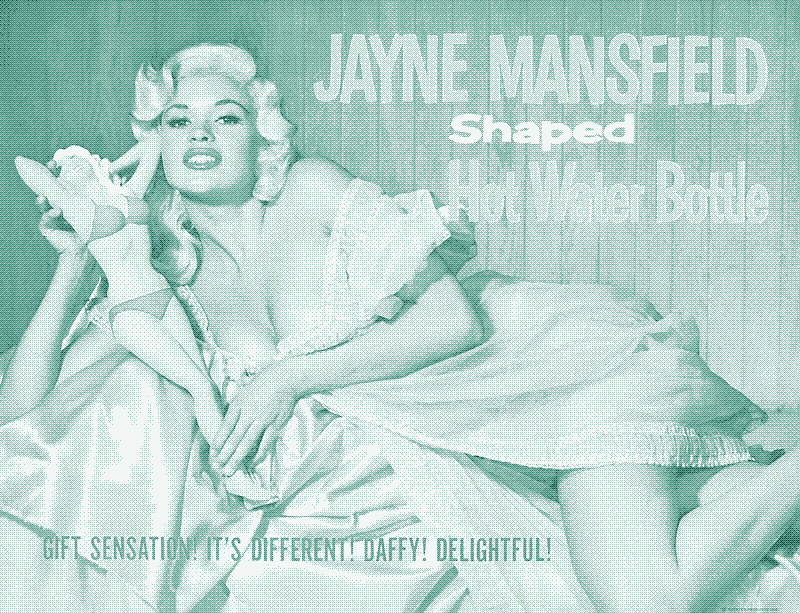
To safely use rubber or PVC hot water bottles at higher water temperatures, it’s important to replace them after a few years of use, and to store them properly. If you really want to use higher water temperatures, metal hot water bottles – inside a cover to prevent skin burns – are the safest option.
However, if you keep the temperature below 60°C (140°F), the worst-case scenario is just getting wet. If you use PET-bottles, you should surely stick to this maximum temperature, because at higher temperatures they could melt. Furthermore, a PET-bottle should not be used for drinking after it has been used for heating, because the higher temperatures may release chemicals in the water.
Water use & infrastructure
Hot water bottles also require a source of water. It’s possible to reheat the same water over and over again, thus limiting the water use to a few litres during the lifetime of the bottle. However, that’s not always the most practical solution. In modern households, hot water can be sourced from an electric kettle, a pot on the cooking stove, or the hot water tap.
Although hot tap water is the safest source of water for a hot water bottle, once the water has cooled down there’s no way to get it back into the pipes for reheating. Furthermore, it takes time before the water comes up to temperature, meaning that more than two litres of water will be consumed.
Even a slightly lower shower frequency easily provides you with the water and energy for continuous hot water bottle use.
Using an electric kettle – or a pot on the cookstove – makes it easy to reuse the same water over and over again, but it faces some problems too. First, if your electric kettle does not come with a programmable water temperature, you need to make sure the water does not get too hot. I solve this by dipping the probe of a digital thermometer in the kettle while warming the water.
Second, if you reheat the water from rubber bottles, the kettle (or pot) can no longer be used to heat water for human consumption because it will taste bad. So, either you use a separate kettle for use with hot water bottles, or you warm the water in the only household kettle and discard it after use.
Even if the water is not reused for other purposes (such as watering the plants) the waste is quite limited. The average shower consumes enough water to fill 37 hot water bottles. Likewise, the energy use of the average shower corresponds to the energy use for heating 17 hot water bottles (which use water with a higher temperature than a shower). Consequently, even a slightly lower shower frequency easily provides you with the water and energy for continuous hot water bottle use.
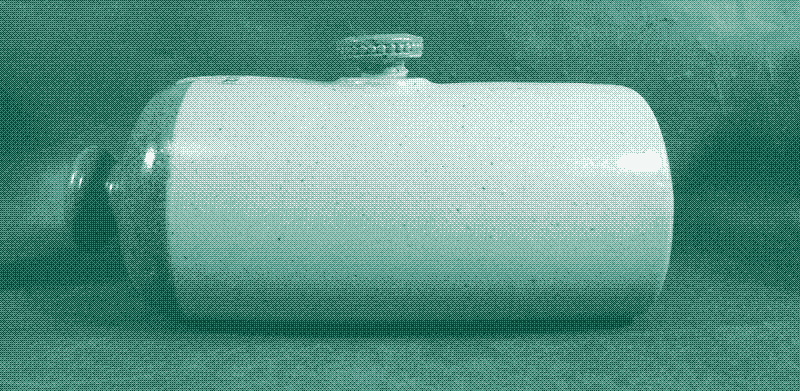
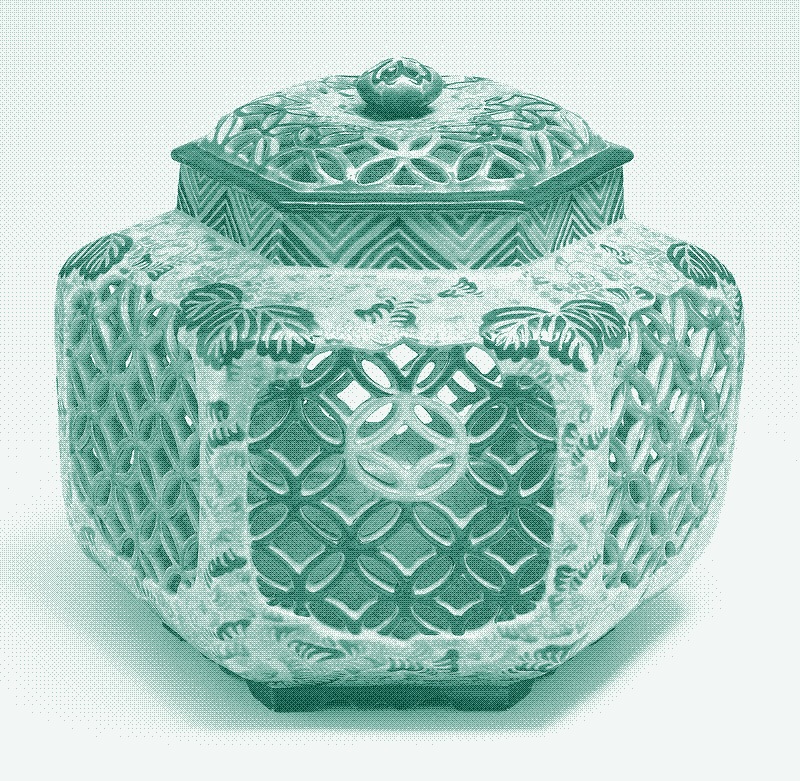
Cold water bottles
Hot water bottles can be used for cooling as well. In this case, they are filled with cold water or put in the freezer. Cooling people is much more energy efficient than cooling spaces. I don’t have air conditioning and rely entirely on fans and cold water bottles in summer, when temperatures are usually above 30°C. I use “cold water bottles” in a similar fashion to hot water bottles – they go into the bed, under my feet, or behind my back.
For cooling I use plastic PET-bottles and metal drinking containers, not rubber water bottles as they get hard and brittle. Keep in mind not to fill the bottle completely – water expands when it’s frozen – and to put the bottle inside a protective cover to prevent iceburn. Also keep in mind that they will get a bit wet on the outside as the ice melts – although this effect only enhances the cooling. Like hot water bottles, cold water bottles work outdoors as well as indoors.
Reactions
To make a comment, please send an e-mail to solar (at) lowtechmagazine (dot) com. Your e-mail address is not used for other purposes, and will be deleted after the comment is published. If you don’t want your real name to be published, sign the e-mail with the name you want to appear.
Reactions
Will K
How long does a typical rubber or pvc stay long for, if filled with 60c water?
Michael Lipkin
awesome. if you boil a 2/3 full kettle and top up with cold water before filling the bottle you get about the right temp. No need for thermometer
Tim
I live in a very (!) old family house house in north-east France, near the belgian border, and even though the house has been partially equiped with a central heating system, heating the place as you would heat a modern house simply isn’t an option (unless you don’t mind burning A LOT of heating fuel). As a consequence of that, HWB have always been the house standard when it comes to thermal confort during night time when a thick sweater and a scarf usually fixes it during the day. I did find a new interesting use for HWB, though : I’ve recentlly started homebrewing and my fermentation chamber (aka: the closet) lacked a couple of °C during the night, when the central heating system is turned off. I was afraid that this might screwup my fermentation process so I quiet naturally thought of wrapping the 5L fermenter into a couple of blanckets with a HWB stuck next to it and wrapped itself in cloth to allow a slow night long heat transfer and avoid overheating. Did the job perfectly!"
Thanks. Great article.
Kris De Decker
John,
Thanks. The kotatsu is mentioned in the article. But the link you sent had some surprises for me. Most notably: a railway carriage full of kotatsu’s !
Tjitske
Hi Kris, thanks for the insightful article.
What’s your opinion on heat pillows? Like cherry stone or rice pillows? If my calculations are correct, heating one in the microwave is even more efficient than heating the water for a water bottle. Heating in the oven is probably pretty inefficient although I can imagine tossing the pillow in after cooking and not heating for the pillow specifically would help.
Additionally, heat pillows don’t wear as much as pvc/rubber bottles and there’s no waste associated with their use. They can be produced from scrap fabric and food waste (cherry stones) or other organic materials, limiting waste potential in the production chain.
I’m curious to hear your thoughts.
Hugh R
In New Zealand, at least until the 1950s, some hotels would put hot water bottles in guests’ beds while they dined. A well understood local custom when central heating was not common. My parents, staying at one hotel, were startled as they returned to their room to hear very loud noises, beating, and shouts coming from a nearby room. The reason? An American guest, returning from dinner, and seeing a suspicious lump in the bed, believed it was a snake and was attacking it with a golf club. The bottle burst and he now of course had an amused audience and a soaking wet bed.
A Kalkman
Very funny piece of info. I am 71 years old and use the hwb already for 50 years. I bound one on my back once when I was working as an upholsterer and had a backache. It brought me through the day. I use a very old rubber waterbottle allredy more than 20 years old. I will google and try and find the Japanese one. Thanks again very much for this interesting
piece of information. From Holland with love, Ans Kalkman
Wim
With the Boy-Scouts we used to heat bricks in the camp-fire and then carefully roll them in newspapers and blankets; kept us warm even during camping at -5C or worse.
My mother had a few copper hot water bottles made from old WWII canon-bullets. I still use 1 or 2 plastic hot water bottles in Portugal during the cold season, typically 3 months… Enough to avoid heating the whole house. Together with thick blankets it keeps the costs of winter to a minimum.
Etienne
One alternative to the hot water bottle which is often used in Switzerland is the “Cherry Pits Pillows”/“Cherry Pits Bags”. Cherry pits, which you can easily gather with a cherry pitter when making preserves, (and I assume previously mainly from distillery waste as each farm was distilling all kinds of fruits) are cleaned and dried. Then, you sew them in a bag, and put them into an oven. There was a space for backing and heating up stuff in each farm kitchen when people cooked with wood, but the modern electric oven or even microwave work as well. Then you use them as the hot water bottles you mentioned. There are commercially available ones, you can find them with the word “Kirschensteinkissen” or “Chriesisteisäckli”.
Will Lisak
I think you neglect here the real original hot water bottle, - the hot stone. The hot stone has been used doubtles for the same purpose since the domestication of fire, but has survived in cultural memory because it does not leave behind a discernible artifact, (a stone looks like a stone) except in the case of the ubiquitous shaped marble and soapstone warmers. Here in Vermont they were placed on or around the stove during the day and taken to bed at night and others were used to put under your feet driving a sleigh or cart or even to stand on if you had a cold outdoor job to do in one place. I use them (the soapstone pieces) and they are truly remarkable in their heat retention.
I’ve seen old timers around here with soapstone blocks stacked up all over and around their woodstoves, increasing the heat mass and slowing and regulating the heat dispursursion. as an aside, I was asking last year for advice on an efficient wood stove, thinking I might get one of the soapstone wood stoves that are so lauded in the us, and a russian friend said to just stack stones all around my current old iron stove and it would yield the same benefits. I’m not sure of soapstone vs water but the manufacturing and opportunity costs are surely much lower and it’s less messy and prone to catastrophic failure.
Matt
I was using a 2l plastic fizzy drink bottle filled from the hot water tap and stuffed in my jacket for the frosty drive to work, my car’s heater would take ages to warm up and this bottle of hot water made all the difference,
on arrival at work the guy who usually unlocked the gate would often be parked outside because the padlock was frozen, my bottle of water poured over the padlock thawed it in moments,
I also never bought any windscreen de-icer, I’d just have a second bottle of hot tap water and pour it in a line across the top of the windscreen and rear window,
the tap water from a modern domestic hot water system is regulated to a temperature not high enough to cause scalding and in my experience not hot enough to cause frozen windscreens to shatter, the plastic fizzy pop bottle is of course free!
Rolf Bauche
Hallo,
mal wieder ein sehr interessanter Artikel!
Zwei kleine Anmerkungen:
Siehe: https://koerper-waermespender.de/pages/waermespender.php
Mit freundlichen Grüßen
Rolf Bauche
Tjeerd
Dear Kris,
I’ve been experimenting with similar heat-the-person-methods. I use 17 Watt grow-matts for young plants. They are flat, very comfortable and cheap. I typically use one under my feet (plus blanket) and one behind my back in an office that is kept at 13 degrees.
So I use 34 Watts. This compares with you calculation: every two hour re-heating water from 30 to 60 C requires about 60 Wh and I use 34*2 = 68 Wh of electrical power. However if one heats cold water to 60 C one would use twice as much energy.
The savings in terms energy are indeed immense, and comfort is indeed higher than heating the whole room when I just sit behind the desk.
The great advantage of warm water is that they are more portable, so I will start using these as well.
Best,
Tjeerd
Sue Rine
I was fascinated to read your article about the history and use of hot water bottles. For 4 years our family lived in a cabin with no power. In Winter hot water bottles were a feature of daily life. even with the fire going there were times when the temperature was below 10deg C all day and lower at night. Each family member had two hot water bottles which we mainly used in bed, but there were also many times when we had one tucked up our jumpers during the day.
We’ve graduated to a passive solar house and the hot water bottles are now a memory. 😀
Romain Lange
Bonjour,
Do we know if hunter-gatherer societies, or the Inuits, use the hot bottle technique ?
I see in this documentary about paleolithic techniques, with bladders used as water bottles. Could they be used as hot water for cold nights ?
https://youtu.be/Wnv5WVB4j34?t=2203
kris de decker
@ Will Lisak @ Rolf Bauche
Indeed it seems that I missed part of the story: the hot stone. Great to see this, thanks!
@ Tjitske
Heat pillows are an alternative but hot water bottles can hold more heat.
@ Romain Lange
Could be but maybe stones were more practical.
jillene
PS THANXXX for posting this
Carlos E.R.
There are electrically heated “bricks”. They are connected for 5 minutes to the mains (a thermostat automatically impedes overheating), then unplugged and put inside the bed. I assume they are a ceramic body with a resistance inside, put in a metal casing and a wool cover.
Heat last for hours. I much prefer these to the water bottle, which eventually will burst and wet the bed, ruining the night and more.
OcracokeIsland
Try a large cherry pit pillow, cherry pit foot warmers
We use a Water Heated Mattress Pad, basically a small water heater unit, under mattress pad has medical grade tubing running up and down in a pattern. We have an additional fluffy pad on top of the hot water one,to reduce any lumpy feel,works great.
Search for “Navien Mate EQM 350, Queen – EMF-Free Water Heated Mattress Pad – Dual Tempera”, the premium $$$,from there you can find cheaper brands,what we have for $135 and up, prices fluctuates,Google “MERRY HOME Water Heated Mattress Pad Topper”.
Also something like a Whitby Hand warmer,uses catalytic head burner, no real flame, but it gets very hot, you have to put it in a small pouch, you don’t want to sleep with it because of the heat output and it uses oxygen. Will heat 8 hours.
As with anything use common sense, and at your own risk.
Ocracoke
“I’d just have a second bottle of hot tap water and pour it in a line across the top of the windscreen and rear window”, probably never happened to you, but excellent way to crack glass,in my neck of the woods,I use cold water.
Shane Wilson
Kris,
I’m surprised you didn’t mention the largest hot water bottle of all – a water bed! I slept on these for years in cold climates and crawling into bed was ALWAYS a pleasure. But, they seem to have fallen out of favor.
Steve Bohne
Yeah…great…until the stupid cap comes off and fills your bed with tepid water. No thanks.
Teri
Fill a tube sock with rice, tie a knot on top, microwave it for two minutes, stay warm all night. Reuse for years.
vyasamoorthy
Thanks for wonderful story on hot water bottles.
I once wrote about Human bed warming Services offered in a Hotel. See link:
https://vyasa-kaaranam-ketkadey.blogspot.com/2010/01/human-bed-warming-services-offered-by.html
This was in 2010 - don’t know if this continues now!
Wendy E Powell
I was raised using hot water bottles to stay warm. Sixty years later and I still heat my bed and feet with a hot water bottle. I put hot tap water in it for 15 minutes before half emptying and topping up with boiled water. My bottle is tepid temperature when I wake up the next morning (7 hours of sleep). I’ve gifted water bottles to family and friends and they all love them.
candace
Oh, I forgot to add to my first comment, my grandfather, who grew up in South Dakota in a SOD HOUSE (!)…must have been in the late 1800s…would go to school on a horse drawn sleigh in the wither. To stay warm they had a big round rock that had been heated in the fire then wrapped in a buffalo skin. The children huddled around it on the way to school.
On my wood fire stove I keep a pot to heat water for dishes or what ever. If that fire is going, rather than bother with the water bottle, I use 3 fire bricks that are always on that stove. I can take a brick for my feet or lap and rotate them to keep the warmth up. I put one at the base of my bed before going to sleep and take one with me for my arms. My sleeping room is never heated, so the bricks or water bottle do save energy and make the bed quite comfortable.
Pawan Kumar Gupta
Despite electricity operated tell bottles, the hot water bottle (water in a rubber bottle) is still very common in India. They offer much better thermal comfort to body in winters. Often used to sooth the painful joints or troubling veins in the legs.
Mark O'Connor
Years ago when I looked after an old farmhouse in Italy, the inside temperature at night in winter was often below freezing. I found that one hot-water bottle would be cold and useless before morning. But two bottles, placed back to back and wrapped in a double-bed sheet, were as good as another human in the bed–still warm in the morning. A tip worth knowing!
Tomislav Plechinger
Another great article!
Just a small typo that I noticed - not “Croation” but “Croat”.
Thank you for spreading the word about the little-known but very prolific inventor, the great Eduard Penkala.
Jenny Matthews
Kris you should head up a climate change conference because we’re going to need all the help we can if the targets are going to be met - which they’re not at the moment, and time is running out. We were invited to a garden supper in Mallorca in January - zero temperature - the table had a massive blanket over it, big enough for 6 people to tuck around their hips, and with the 1 bar electric heater under the table, we were very toasty nearly up to our waists - thermal tops etc. kept our top halves warm, and we enjoyed a great supper very comfortably. I guess hot stones would have done the job equally well.
Erik
I guess that today a microwave oven will be convenient for reheating the bottle.
Sweden does not have a strong tradition of hot water bottles. In upper class homes coal heaters were probably used in the 18-hundreds. Warm water bottles would often be insufficient here and houses should be properly insulated and heated. There are stories of people in the country side sometimes keeping it real warm (25-30 degrees perhaps more) inside in the winter time in areas where firewood was one of the few commodities available in ample supply.
In the last couple of decades pillows filled with wheat that should be heated in the microwave oven have been marketed as warmers. Perhaps more against aching body parts than for sleeping. The heat capacity would clearly be lower than for hot water.
Erik
Tom
Many African safari camps place hot water bottles wrapped in towels in your bed at night (nights can be cold!). On her first safari my partner crawled into bed and pushed her feet up against the hot water bottle. She shrieked and jumped up, thinking some African critter had crawled into her bed. We now use hot water bottles in bed in the winter so we can keep the room cool but our feet warm.
Dale
All through my childhood, we used a red rubber HWB. It never burst, over a period of some 20 years, and there was never any talk of its needing to be replaced because of fear that it might burst. The first HWB I bought after returning to the US following a decades-long stay abroad burst and flooded the sofa on which I was using it. What a shock!
Why are there no long-lasting rubber HWBs on the market today? Experience tells me they should be possible. I suspect that companies find it in their interest to force people—on pain of burns or flooded beds—to buy new ones every 2 years or so, and how I resent that!
Erin
My father grew up in Montana in the 40’s and his parents were ranch hands (employees on a large ranch). He had a long walk to his one-room schoolhouse down the snowy roads and he said in winter his mother would give him two hot baked potatoes for his pockets to keep his hands warm, and then that would be his lunch.
Ulrich H
In northern Germany hot water bottles are a common household item. I’d expect roughly 10-20 of the population, mainly women, to use them regularly, during their period, for stomach-aches, or for being cold. Also, sacks filled with cherry pits, heated in the microwave with a glass of water, are used for a tight neck or back, or also to add some heat during cold nights if the blanket is too cold.
Interesting, that apparently in other places they are not that common at all.
zifro
There is one other thing, you can do with hot water:
Make Tea.
If you have an infrastucture of Samowars, the uttility would greatly increase, if you could use that hot water to make tea.
Public Samowars filled with potable water, have the advantage that you do not need to bother with recycling the water if the people can drink it.
Of course the problem of providing the people with clean drinking containers would come up.
But Hydration is one of the major concerns for the homeless.
So even a public fountain with cold, potable water would improve their situation.
Vanda
I live in Melbourne, Australia. I have always been very fond of hot water bottles, and far prefer them to electric blankets which I find quite uncomfortable. Another use for them that I worked out a few years ago is to fill them with water and place them in the freezer in summer. They are great to put in your bed on a really hot night. They cool the sheets down beautifully.
I lived for some years right in the city, and there were many homeless people. Melbourne’s winter temperature can be quite low, and many nights are under 5C. The wind chill factor makes the temperature lower. In the really cold weeks of winter, I would take out filled hot water bottles at night for people sleeping on the street. I had an agreement with some of the local 24 hour convenience stores that they would allow people to refill them. As you could imagine, the bottles were very much appreciated. I sometimes tucked them in with people who were already asleep, making certain that they weren’t touching bare skin of course. I hope it helped them feel as if someone cared.
I have sustained burns from hot water bottles when sleeping with them when drunk! It’s amazing how much damage they can do. I tend not to do that nowadays, and I also prefer bottles with covers as they are more comfortable to use and stay hotter longer. I have a couple which have amazing covers and actually stay warm all night and well into the next day, which is great if you are in bed with a cold or something.
When I first set up my facebook page and I was asked during set up what I liked, I didn’t know that it meant I could like pages. It was winter, so I just said hot water bottles. Nothing happened, presumably because there were no hot water bottle appreciation pages. Maybe there are now!
Maggie
You are wonderful. For decades, nearly impossible to find rubber hot water bottles unless one wanted to douche. I think they are still nearly impossible to find. I treat mine better than I do myself. All praise to you. Maggie
John Cliff
While serving in the army during a German winter a great way of keeping warm while traveling on a 432 APC was to sit above the engine cooling louvers. It was wisest to rope yourself on, just in case of falling asleap. The hot airblowing out of the louvers would blow the snow away no matter how heavy it was comming down.
John
Good article. However, a word of caution. Just before Christmas my partner burned her left ankle, badly, when her HWB burst. She is still having the burns treated.
The HWB had worn through on the shoulder and finally gave out, not on the seam or neck. We only realised how worn it was when we removed the fabric cover- it was her favourite Teddy Bear one- nothing was showing on the cover. Please, occasionally, take the cover off and check the actual bottle for wear.
Chris
I own (and frequently use) a metal Japanese hot water bottles as well as a pair of rubber bottles. While both styles do an excellent job of keeping me and my bed warm, I prefer the Japanese one over the rubber version.
Despite being rigid, meaning it can feel uncomfortable depending on where you put it, the metal version retains heat noticeably longer than the rubber version. I sometimes heat water on the stove to about 150 F, put it into the metal bottle, stick it in my bed anywhere from 30 to 60 minutes before bedtime. In the morning, the water is still quite warm if not hot to the touch. (I haven’t checked it with a thermometer, but an educated guess would be around 110 F, no more than 120 F.)
Last comment: As someone else mentioned, cloth covers are mandatory, especially| with metal hot water bottles.
Aynsley Brown
For at least the past 30 years, I have been heating our HWBs in our microwave.
Heating on full power for 5 minutes works perfectly. Just make sure that the bottle can freely rotate in the oven and heat up evenly.
HWBs that have brass screw threads in the neck funnel should be avoided.
Rubber bottles are to be preferred, they seem totally unaffected by the microwaves.
Some plastic-material bottles can develop hot spots in the wall of the bottle and locally melt. This is probably because some plastics seem not to be as ’transparent’ to microwaves and can get heated in local spots, to the deterioration of the bottle.
The great advantage of heating the bottle in this way is that the same water can be used over and over again.
Sandra
I love my HWB - great article, thank you and warm wishes to all users
Deborah Lindley
I started making hot water bottle carriers last year to keep people warm working from home and meeting friends outside in winter lockdown www.deborahlindley.com I barely take mine off.
Clare
A friend mentioned a great use for hot water bottles.
She used to have to spend a lot of time waiting in her car while her children played football, etc. Instead of freezing or leaving the car running, a hot water bottle kept her toasty and she read away happily while she waited!
Mark
Thanks for this excellent article. I grew up reading Walter Hottle Bottle stories https://www.lookandlearn.com/characters/character.php?c=walterhottlebottle and still use one every night x
Benoît Gingras
PS. I forgot to mention that this article reminded me of friends hearing
a man in Yukon saying that he boils eggs and then keep them hot (in
their shells of course!) in his pockets while going outside. It provides
some heat to your hands and minimal heat to your body and you have a
healthy and useful snack on your way!
Benoît
Robert
Interesting article.
I think you should have a look at Camelbaks. They’re basically hot water bottles worn as a backpack, and they have a tube to drink from them. This solves the issue of reusing the water.
They’re quite popular for people skiing or doing other kinds of outdoor sports, keeping you warm and hydrated at the same time.
Tuck
I have been using small NATO ammo cans (metal boxes with sealed lids) 1/3 to 1/2 filled with tealight candle wax as a hot water bottle substitute. I place them on low heat on an electric stove until all the wax is liquified, which is when heat can be felt from the top of the boxes. The heat output is better than a HWB, as it is more evenly distributed through the night. Caution must be used however, as overheated, they will probably cause a fiery explosion.
John Hackett
Dear Kris,
I loved your recent article on hot water bottles. It inspired me to buy a ceramic yutanpo and it is incredible. I’ve been looking at your picture from the article, of the desk surrounded by blankets to trap the heat, and wondered if you’d seen the kotatsu people have in Japan? See this article:
https://www.japan.travel/en/uk/inspiration/kotatsu/
I’m considering one as a maybe slightly more elegant solution than nailing some blankets to my desk :)
Thought you might be interested, apologies if I’m preaching to the converted!
Thanks for reading,
John Hackett
PS, the site is amazing, never stop!
Dorothy
bloody marvellous ! Use mine often for an old ladies comfort
GDR!
In an on-grid scenario, a typical western home has a microwave oven
which heats quickly and efficiently. For such scenarios, there are
termofors made of fabric, filled with cherry seeds.
I have one of these (bought for ~€5) and it keeps warm for about 45-60
minutes after heating it in a microwave for 90 seconds. According to
advertising, it works great for cooling too. Haven’t tried.
And, of course, it would be easy to make one yourself.
David Veale
We’ve been using antique footwarmers made from soapstone, and found the thermal inertia to be absolutely amazing – roughly 2.5cm thick, and 25cm square, they’re warmed atop our wood stove and then wrapped in a towel and brought to a cooler room. The significant heat stored lasts for over 4 hours!
Ben Hunkins
Thank you for your article. Our family lives in an off grid cabin in northern New York State. We fill two liter soda bottles (very common in the US) with hot water from the wood stove and then cover them with repurposed sweater sleeves. If we need the heat to be more form fitting then we have small pillow shaped bags (8 inches by 6 inches) filled with rice that we heat directly on the wood stove top. This is achieved by flipping the bag every 5 seconds or so until it’s warm enough for the person using it. We also have a few cats :)
Sandrine
les bouillottes sèches
le coussin aux noyaux de cerises
déjà utilisé chez moi, à rechauffer au micro ondes
confort car chaleur douce
souple, donc on peut l’utiliser partout sur le corp
il a une odeur quand il est chaud, ça plait ou pas
si on le laisse trop longtemps chauffer au micro ondes, il brule => danger (c’est déjà arrivé chez moi)
autre système, mais je n’ai pas testé:
le coussin aux graines de lin, ou aux graines de lavande, même principe que les noyaux de cerises
Sandrine
Leonard Hart
The American pop group “Three dog night” was named after the native American practice of using hairless dogs to keep their feet warm the winter. A “two dog night” was a very cold night so the band went one better!
Federico Leva
I agree with the overall idea that we can save a lot of energy by reducing the temperature at which we heat buildings, without sacrificing comfort.
Unfortunately, in my home in Helsinki, I’ll never get to need a hot water bottle. Thanks to overzealous central heating which leverages cheap district heating, I’ve kept the heating off in my apartment for an entire winter and still the temperature never ever went under 18 °C. In the worst case I needed a sweater and extra pair of socks, or I wore a blanket just for extra comfort.
The results of the two mentioned studies were slightly overstated (one is just a model and the other has a pretty small participation) but thank you for finding them. I wish some major building manager conducted a wider experimentation in buildings where people complain about heating temperature. Maybe the old neighbour in the top floor who always demands to turn up the heat can be satisfied by simple solutions such as distributing her some hot water bottles. Then the people at lower floors can get more reasonable temperatures too.
Randall Reade
This is a great idea. Here in Washington, DC, I see restaurants serving people outdoors on the streets during the winter, and they use those awful space heaters. They consume and enormous amount of energy and issue pollutants, and they don’t even do a good job. HWB would be far more useful.
I imagine you could write an article on how to keep warm, the old fashioned way. Just a few thoughts:
Wear lots of layers of clothes
Drink hot beverages, like green tea (so you don’t overcaffeinate yourself)
Get a dog or cat to snuggle with. Or a partner.
Take a hot bath and then keep the water in the tub to warm the air, or use the water for a HWB afterwards. Hot baths keep me warm for a very long time.
Wear a hat. (In many places in the US, men dont’ find it “cool” to wear a warm knit hat and would rather freeze). At night, wear a nightcap, like Santa. You lose a lot of heat at the top of your head.
Keep surfaces warm, or at least not cold. People used to put think tablecloths on tables so that they wouldn’t feel cold to the touch.
Oil lamps help. I find that in a well insulated space, a single oil lamp provides light and quite a bit of heat. Eskimos know that a single candle will heat up an igloo very nicely.
Keep a room moist. Old timers often put a kettle of water on the coal stove and let it steam the room. A room that is moist holds heat better than a dry room.
In the evening, sing songs with the family that require you to clap your hands. That will help keep your hands warm.
I’m sure there are 100 other ways to keep warm.
ingo
The french foot warmer is an interesting one. One could heat a modern version on an induction stove.
Instead of using water, one could fill it with paraffin to keep it warm for a guesstimate of 6-8 hours. Heat the paraffin to above melting ‘point’.
paraffin: density 900 kg/m3, specific heat 2.3 kJ/kgK, heat capacity2070 kJ/m3K, heat conductivity coeffcient 0.25 W/mK, melting trajectory ~50-54°C
Emil Mahnke
Hi Kris,
I’m a physics student at a university in Germany (about to graduate) and I have been reading my way through your blog, for the past year and a half (loving it!).
I’m writing to talk about two things that I think you may find interesting:
Window quilts/blanket:
Windows, even when double or triple-glazed get some of the highest heat losses to the outside. In the night (which is most of the 24 hours in winter), they don’t even provide heat input through sunlight. One can increase their insulation value by using curtains, but this is at best a small improvement. However, I have recently found out about these so-called window “quilts” or “blankets”, to cover windows with at night. These can be made d.i.y. or there are a number of commercial products available. There are a number of variants of these, but their function is similar: they fit tightly against the window surface, preventing air circulation behind them (unlike curtains), while providing very little in terms of heat conduction through their surface. The performance numbers I’ve seen online suggests that they can bring a single-glazed window to the performance of a double or triple-glazed window, at a very low price.
Phase change materials:
Reading your article about water bottles, a possible improvement occured to me. Instead of using water, one could use a phase change material (PCM) instead. These store thermal energy as the lattent heat of fusion of the phase change from liquid to solid. Examples of these are the sodium acetate hydrate used in hand warmers, paraffin (wax) or even water/ice for cooling needs. A lot of these materials have energy densities that are seriously competitive (or even exceed) the energy release by a water bottle that is cooling down. They however have one major advantage: since most of the energy is released during the phase change, these materials will release heat at a constant temperature (melting temperature). Water releases lots of energy at first (at less safe temperatures) but the rate decreases exponentially as the temperature decreases (it’s literally an exponential decay function). This means that PCMs could provide a significant improvement to water bottles, by releasing energy at a more consistent, safer and more useful temperature.
I’ve seen PCMs used in thermal batteries, to store energy from electric (or heat pump) heating at times when electricity is cheap. They can also be a very good improvement to a hot water tank, for example for residential solar thermal applications. Another application I’ve seen is using them as additional thermal mass to buffer out hot days and cold nights.
In the context of the energy crisis that we are fearing for this winter, I actually think that somewhat like you, can help a great deal of people in this situation. I’m trying to get other people to read your articles since you have written many articles about alternatives to the “normal” way of heating ourselves (or rather our buildings). I genuinly think that if some of your ideas spread, it might make a significant dent in our gas consumption (and costs of living!). I’m looking at making myself a window quilt for my appartement this winter, I think it would be great if you could get other people on board doing this!
Kind regards,
Emil Mahnke
Guillaume
An easy way to heat water around 60°C is to mix boiling water with the same amount of water from the tap (50% boiling water + 50% cold water). Of course the result depends on the temperature of the tap
water. I tried today and measured 65°C.
I purchased a sausage-shaped hot water bottle (2L), and I confirm it’s great. I usually wrap it in a big scarf that I tie around my waist. To me the lower back is the perfect body part to receive heat from. A friend told me that women in Hamalaya would often tie a folded blanket or cloth around their waist to keep them warm. I tried it and find this technique quite effective. Covering your waist makes you warmer and doesn’t affect your mobility.
Stephanie L Takeshita
For a hand-warmer, I use an extra-wide coffee mug dedicated to this purpose and the microwave, heating for 2 - 2 1/4 minutes (depending on how cold my apartment is); then top it with a small porcelain dish that fits it perfectly, then topping that dish with a single fuzzy earmuff.
The warmth lasts for a good 30-45 minutes when I’m sitting at my PC and reading or watching videos, or doing things that require only some mouse point-and-clicks. No water wasted from emptying out water bottles or waiting for the tap to run hot.